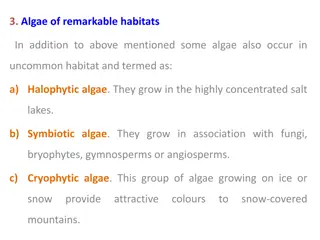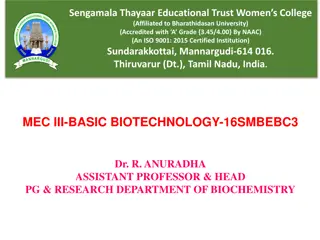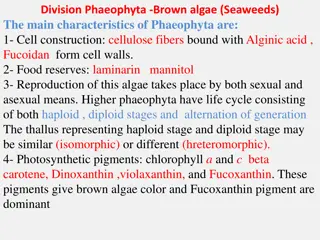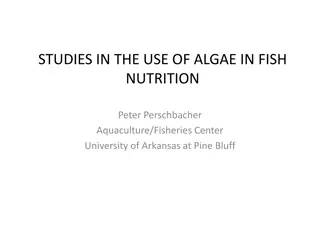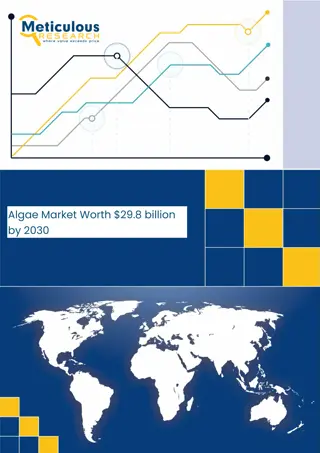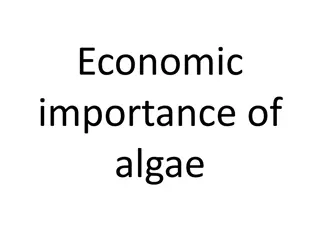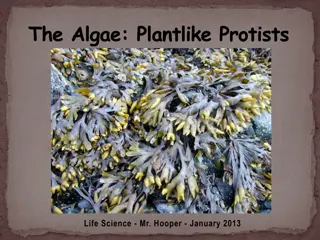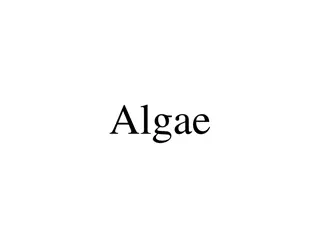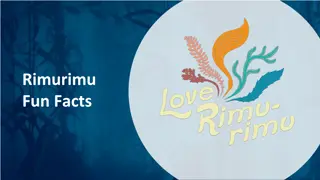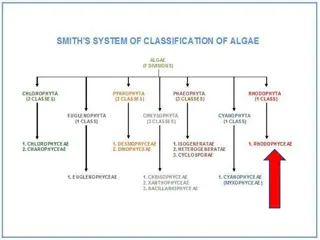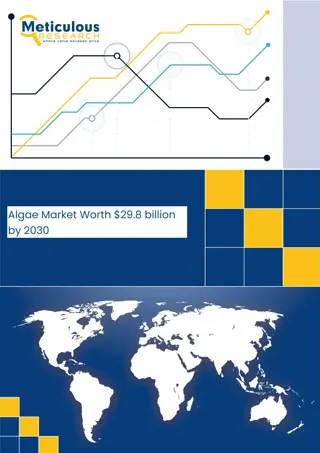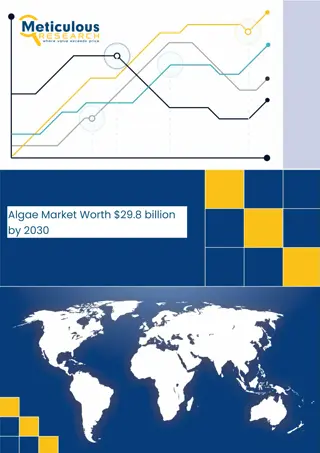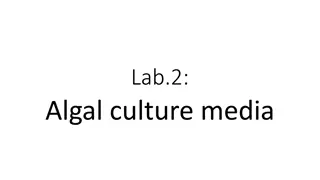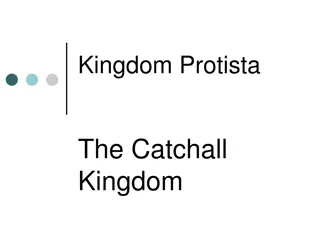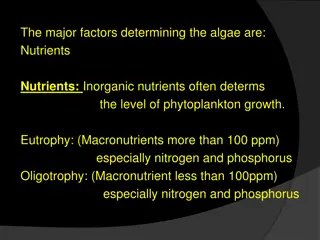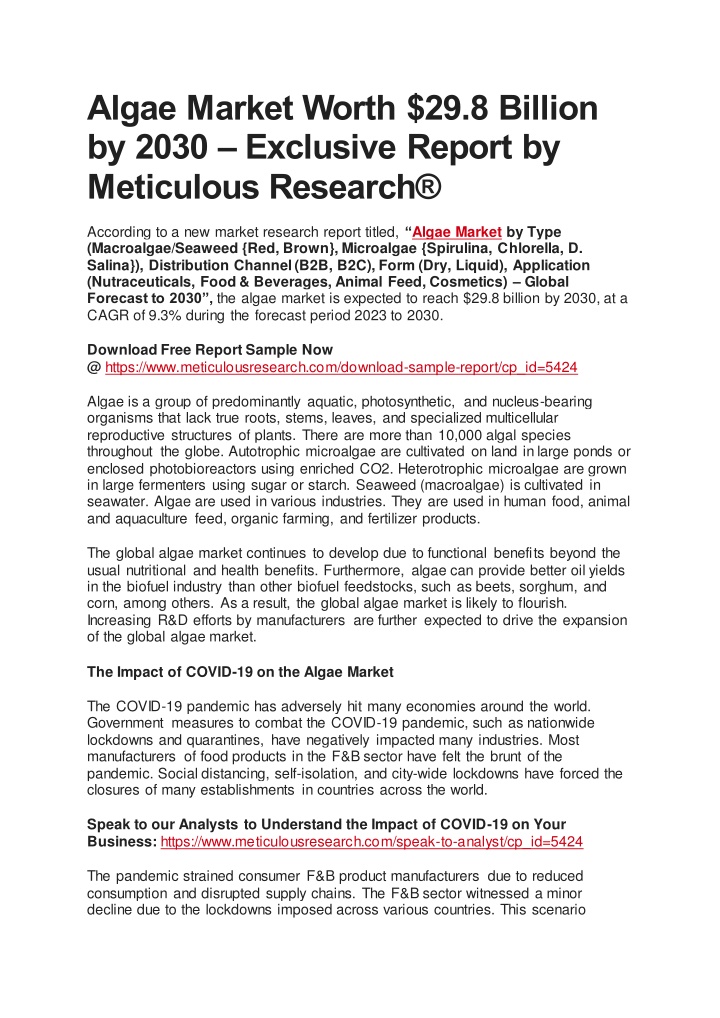
Algae Market
Algae Market
Download Presentation

Please find below an Image/Link to download the presentation.
The content on the website is provided AS IS for your information and personal use only. It may not be sold, licensed, or shared on other websites without obtaining consent from the author. If you encounter any issues during the download, it is possible that the publisher has removed the file from their server.
You are allowed to download the files provided on this website for personal or commercial use, subject to the condition that they are used lawfully. All files are the property of their respective owners.
The content on the website is provided AS IS for your information and personal use only. It may not be sold, licensed, or shared on other websites without obtaining consent from the author.
E N D
Presentation Transcript
Algae Market Worth $29.8 Billion by 2030 Exclusive Report by Meticulous Research According to a new market research report titled, Algae Market by Type (Macroalgae/Seaweed {Red, Brown}, Microalgae {Spirulina, Chlorella, D. Salina}), Distribution Channel (B2B, B2C), Form (Dry, Liquid), Application (Nutraceuticals, Food & Beverages, Animal Feed, Cosmetics) Global Forecast to 2030 ,the algae market is expected to reach $29.8 billion by 2030, at a CAGR of 9.3% during the forecast period 2023 to 2030. Download Free Report Sample Now @ https://www.meticulousresearch.com/download-sample-report/cp_id=5424 Algae is a group of predominantly aquatic, photosynthetic, and nucleus-bearing organisms that lack true roots, stems, leaves, and specialized multicellular reproductive structures of plants. There are more than 10,000 algal species throughout the globe. Autotrophic microalgae are cultivated on land in large ponds or enclosed photobioreactors using enriched CO2. Heterotrophic microalgae are grown in large fermenters using sugar or starch. Seaweed (macroalgae) is cultivated in seawater. Algae are used in various industries. They are used in human food, animal and aquaculture feed, organic farming, and fertilizer products. The global algae market continues to develop due to functional benefits beyond the usual nutritional and health benefits. Furthermore, algae can provide better oil yields in the biofuel industry than other biofuel feedstocks, such as beets, sorghum, and corn, among others. As a result, the global algae market is likely to flourish. Increasing R&D efforts by manufacturers are further expected to drive the expansion of the global algae market. The Impact of COVID-19 on the Algae Market The COVID-19 pandemic has adversely hit many economies around the world. Government measures to combat the COVID-19 pandemic, such as nationwide lockdowns and quarantines, have negatively impacted many industries. Most manufacturers of food products in the F&B sector have felt the brunt of the pandemic. Social distancing, self-isolation, and city-wide lockdowns have forced the closures of many establishments in countries across the world. Speak to our Analysts to Understand the Impact of COVID-19 on Your Business: https://www.meticulousresearch.com/speak-to-analyst/cp_id=5424 The pandemic strained consumer F&B product manufacturers due to reduced consumption and disrupted supply chains. The F&B sector witnessed a minor decline due to the lockdowns imposed across various countries. This scenario
negatively impacted the confectionery industry since people only purchased essential products. In addition, government bodies passed various rules and regulations on purchasing essential goods. According to trade organizations in the nutritional products industry, there has been a significant impact on the global supply chain for functional foods and dietary supplements, which has, in turn, lowered the consumption of microalgal biomass among end-users impacting the growth of this market. In the algae industry, a major slowdown in algae sales was witnessed in the first quarter of 2020 due to disruptions in logistics and transportation. The market also witnessed interruptions in the entire value chain from raw materials supply for culture media to production, packaging, and biomass distribution. The effects of the COVID-19 pandemic on this market were felt in China starting in 2020, as the country is one of the world s largest producers and one of the leading consumers of algal species. In China, factory closures, algae processing facilities operating at reduced capacities, and restrictions on importing and exporting algae biomass strongly impacted the algae market. Moreover, the pandemic also adversely impacted the algae market in many countries, including the U.S., India, Australia, Brazil, and the EU-5 countries. Due to the countrywide lockdown in India, many commercial algae production and processing facilities shut down or were operating at reduced capacities, leading to substantial losses in domestic algal production. However, good nutrition intake is the top priority to maintain an optimal immune system, supporting the strong demand for plant and algae protein food products & beverages through e-commerce platforms. In addition, some of the algal protein products are considered to support the human immune system. For instance, spirulina has immune-boosting and anti-viral properties. Quick Buy Algae Market- Global Opportunity Analysis And Industry Forecast (2023-2030), Research Report: https://www.meticulousresearch.com/Checkout/48430334 Thus, demand for microalgal species, such as spirulina and chlorella, increased during the COVID-19 pandemic as the focus on the nutritional content increased. Despite the increase in demand, there were hindrances in the supply chain due to the lockdown imposed by governments in many countries. This supply chain got back on track post-lockdown. The global algae market is segmented on the basis of type (macroalgae {red algae, brown algae, and green algae}, microalgae {spirulina, chlorella, Dunaliella salina, Haematococcus pluvialis, and other microalgae}), distribution channel (business-to- business [B2B], business-to-consumer [B2C]), form (dry form {algae powder, algae flakes, and other dried forms}, liquid form), and application (food & beverages, nutraceuticals, animal feed, cosmetics, and Others). The study also evaluates industry competitors and analyzes the regional and country-level markets. Based on type, the algae market is mainly segmented into macroalgae and microalgae. In 2023, the macroalgae segment is expected to account for the largest
share of the global algae market mainly due to the rising consumer adoption of plant- based products, growing consumption of seaweed-based products, sources of high nutrients & minerals, and rising government initiatives to encourage seaweed cultivation in several countries across the globe. Also, the growing focus on macroalgae biomass to manufacture biofuels is further expected to create opportunities for stakeholders operating in the macroalgae market globally. However, the microalgae segment is expected to grow at the highest CAGR during the forecast period. Based on distribution channel, the algae market is mainly segmented into Business- to-Business (B2B) channels and Business-to-Consumer (B2C). The B2B distribution channel segment is expected to account for the largest share of the global algae market in 2023. The large share of this segment is mainly attributed to the growing demand for algae-derived products and direct bulk purchasing of algae by manufacturers from various industries, such as nutraceuticals, food & beverage, and animal feed, for further product development. Based on form, the algae market is segmented into dry and liquid forms. The dry form segment is expected to account for the larger share of the algae market in 2023, mainly due to the rising demand for algae powder from the food and cosmetics industries. In addition, its several benefits, such as comparatively high shelf-life and ease of transport and storage, are further expected to support the growth of this market. This segment is expected to record the highest CAGR during the forecast period 2023 2030. Based on application, the algae market is primarily divided into food and beverages, nutraceuticals, cosmetics, animal feed, and others. The food and beverage segment is expected to account for the largest share of the global algae market in 2023 due to the increasing demand for organic foods products, growing consumption of plant proteins and vegan products, and increased utilization of algae for human consumption. Furthermore, rapid growth in population, increasing awareness of the health benefits of algae, changes in lifestyle patterns and taste preferences among consumers, healthy eating habits, and rising disposable income are further expected to support the growth of this market. Based on geography, Asia-Pacific is expected to account for the largest share of the global algae market, followed by Europe and North America in 2023, owing to the presence of several local and regional players, government initiatives to promote the cultivation and usage of algae in several industries, growing demand for organic food products, and increasing applications of commercial sea vegetables, especially in food. Moreover, large-scale production and huge consumption of seaweed, huge availability of raw materials, favorable climatic conditions for the production of algae, and cheap labor availability are further expected to support the growth of the algae market in the region. However, North America is expected to witness significant growth during the forecast period 2023 2030, mainly due to the rising consumption of health supplements, strict regulations against the use of synthetic colors, growth of subsidiary industries like cosmetics and biofertilizers, increasing preference for natural protein sources, and
presence of key algae biomass manufacturers with huge production capacities, especially in the U.S. The report includes a competitive landscape based on an extensive assessment of the key strategic developments adopted by leading market participants in the industry over the past 3-4 years. Some of the key players operating in the global algae market are Fuqing King Dnarmsa Spirulina Co.Ltd. (China), Earthrise Nutritionals, LLC (U.S.), E.I.D. Parry (India) Limited (India), Cyanotech Corporation (U.S.), Seaweed & Co. (U.K.), Green Rise Agro Industries (India), Ocean Rainforest Sp/F (Denmark), Inner Mongolia Rejuve Biotech Co., Ltd. (China), Zhejiang Binmei Biotechnology Co., Ltd. (China), Bluetec Naturals Co., Ltd. (China), Taiwan Chlorella Manufacturing Company (TCMC) (Taiwan), Sun Chlorella Corporation (Japan), Far East Algae Industries, Co., Ltd. (Taiwan), Roquette Kl tze GmbH & Co. KG (Germany), Gong Bih Enterprise Co., Ltd. (Taiwan), Yaeyama Shokusan Co., Ltd. (Japan), Vedan Biotechnology Corporation (Taiwan), AlgoSource (France), Tianjin Norland Biotech Co., Ltd (China), Phycom BV (the Netherlands), AllAlgae Natural Products S.A. (Portugal), Duplaco B.V. (the Netherlands), Taiwan Wilson Enterprise Inc. (Taiwan), Daesang Corporation (Korea), and Algalimento S.L (Spain), among others. To gain more insights into the market with a detailed table of content and figures, click here: https://www.meticulousresearch.com/product/algae-market- 5424 Scope of the Report: Algae Market, by Type Macroalgae/Seaweed oRed Algae oBrown Algae oGreen Algae Microalgae oSpirulina oChlorella oDunaliella Salina oHaematococcus Pluvialis oOther Microalgae Algae Market, by Distribution Channel Business-to-Business (B2B) Business-to-Consumer (B2C) Algae Market, by Form Dry Form Algae Powder Algae Flakes
Other Dried Forms Liquid Form Algae Market, by Application Nutraceuticals Food and Beverages Animal Feed Cosmetics Other Applications Algae Market, by Geography North America oU.S. oCanada Europe oGermany oFrance oU.K. oItaly oSpain oRest of Europe (RoE) Asia-Pacific oChina oIndia oJapan oAustralia oRest of Asia-Pacific (RoAPAC) Latin America oBrazil oMexico oRest of Latin America (RoLATAM) Middle East and Africa Download Free Report Sample Now @ https://www.meticulousresearch.com/download-sample-report/cp_id=5424 Contact Us: Meticulous Research Email- sales@meticulousresearch.com Contact Sales- +1-646-781-8004 Connect with us on LinkedIn- https://www.linkedin.com/company/meticulous- research

